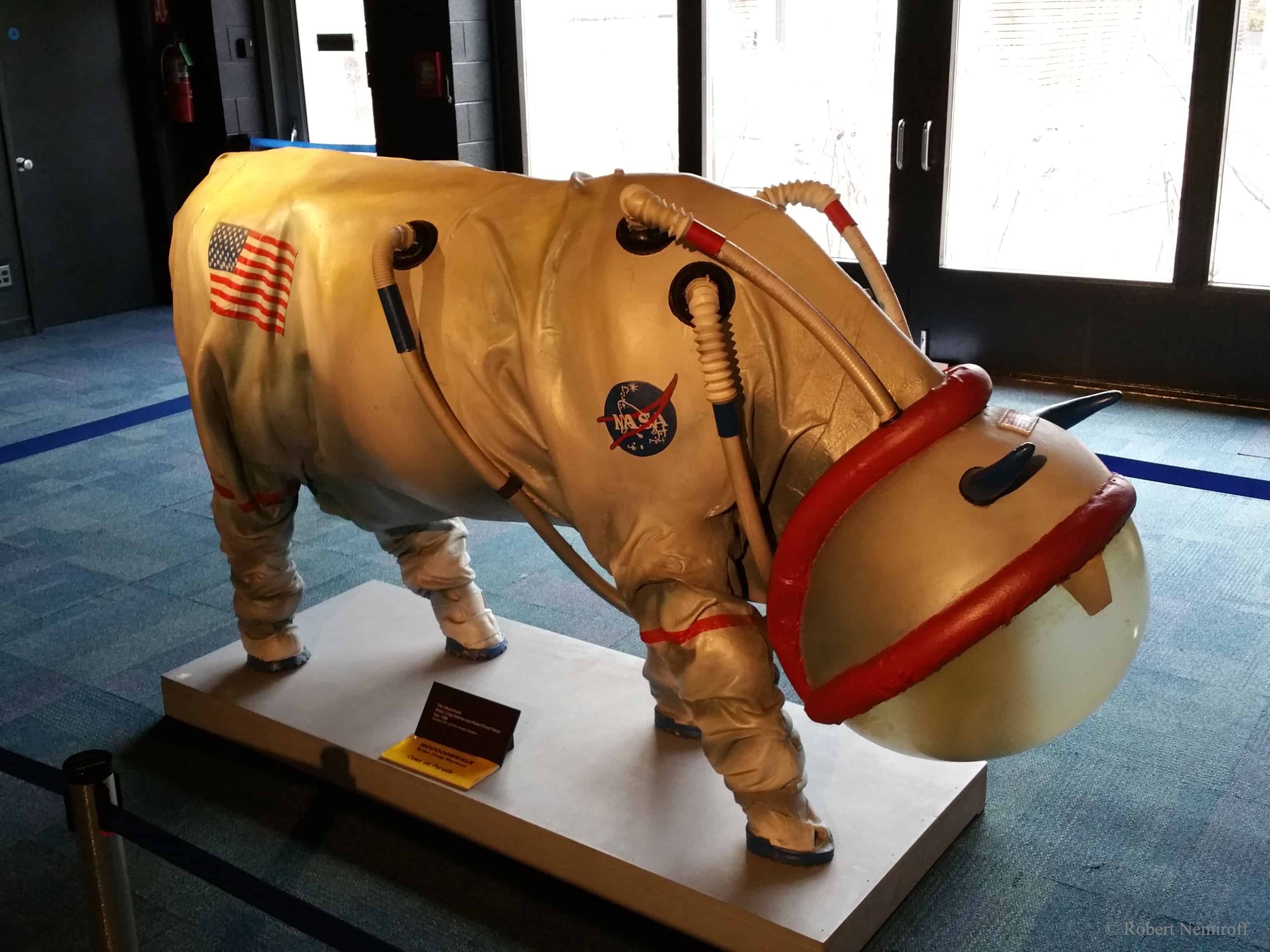
By Hamish Johnston and Tushna Commissariat
As it’s Good Friday today, it can only mean that this week’s Red Folder will include a selection of the best physics-related April Fool jokes from earlier this week. Fermilab’s daily e-bulletin Fermilab Today had an entire joke edition up in the morning – their lead story was probably our favourite as the lab announced its new breakfast cereal dubbed “Neutrin-Os”, but their new day spa sounds pretty good too. CERN went for the funny if slightly obvious Star Wars joke, confirming the existence of the Force, but a slightly more subtle joke came earlier in the week from CERN Bulletin, which ran a story about CERN’s computer-security department handing out prizes for best password – we are still not quite sure if they were joking or not! Astronomy Picture of the Day had a truly fantastic image (see above) of a Lunar Grazing Module described as a “multipurpose celestial bovine containment system”.
Jester over at the Résonaances blog did a pretty funny round-up of ” If [High Energy Physics] bloggers were Muppets, which Muppet would they be?” – we agreed with most of his picks. And just in case you missed ours, make sure you read all about the “British Pi Day” petition. Lastly, though, take a look at this post by Lee Billings over at Scientific American, wherein he makes the case that “reputable science publications [should] abandon the practice” of these jokes at a time when public trust in science is not at a 100%. Let us know what you think about what he has to say.
Following on from our date-related April Fool spoof article about Pi Day, Sverre Holm points out on his View From the North blog that this year Good Friday falls on the actual calendar date when Christ was crucified – at least according to Isaac Newton. For the benefit of our non-Christian readers, today is Good Friday in 2015, but its calendar date (and that of Easter Sunday two days later) is not fixed. Rather it is a moveable feast that is defined by a combination of the lunar and solar calendars. As a result, Good Friday can fall anywhere from 20 March to 23 April. Holm explains how Newton used information in the Bible along with his knowledge of the Hebrew religious calendar to conclude that the first Good Friday was either 3 April AD 33 or 23 April AD 34. Newton favoured AD 34, but a more recent interpretation of a passage in Bible describing a lunar eclipse suggests that 3 April AD 33 is more likely.
Finally, if you are a fan of astronomy, vintage particle detectors and theoretical physics, Ben Still has made just the image for you. He started with a star map, added bubble-chamber tracks and then a sprinkling of Feyman diagrams. You can see it on Still’s Instagram page and we think it looks rather nice.



